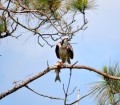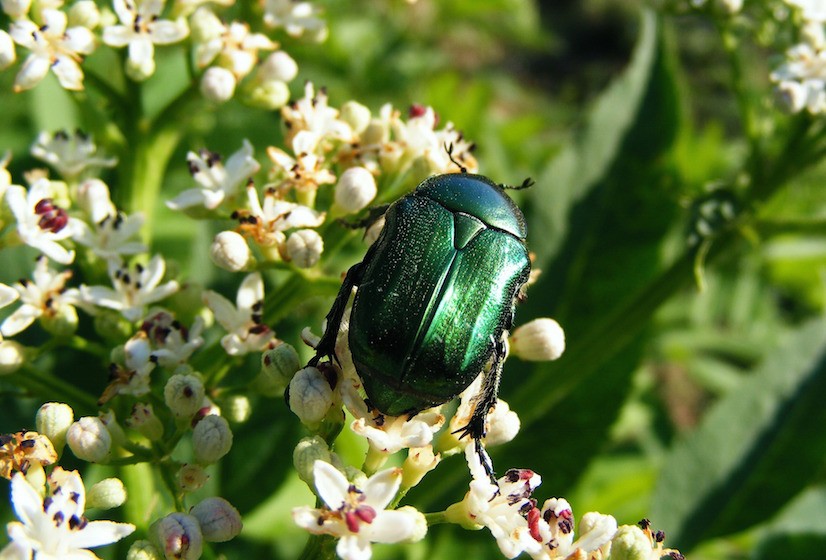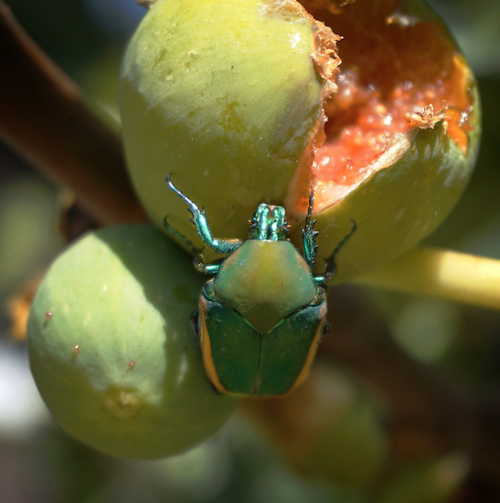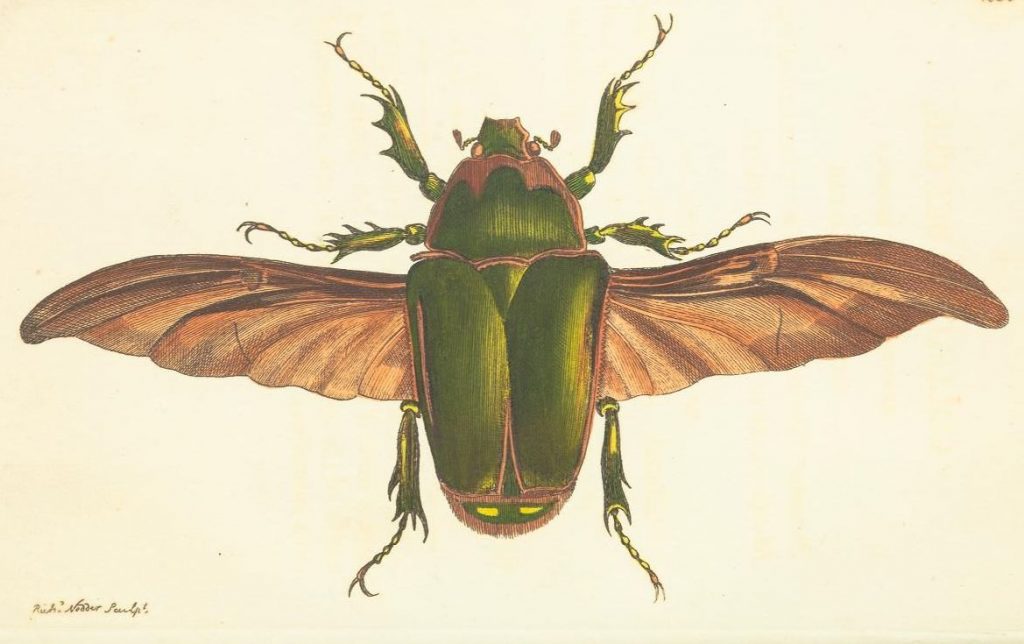The Figeater Beetle (Continis mutabilis) is a member of the scarab family of beetles and found throughout the South Western United States. Originally they lived primary in arid regions such as the Sonoran Desert, but as agriculture spread, so did the Figeater. Today they are a common sight in Southern California where fruit orchards and flower gardens are plentiful.
You will know summer is waning when you hear the throaty buzz of a Figeater in flight. They aren’t the best pilots though. It’s very common to see these guys bumbling and bouncing from one obstacle to the other until they find a shady tree to rest in.
Figeaters are visually stunning and instantly recognizable due to their beautiful iridescent green bodies. Physically, they have the classic scarab shape and tiny horns on their heads that make them look kind of like alien robots.
Have no fear, Figeaters are very docile and don’t bite humans. On the contrary, Figeaters are only attracted to sweets and enjoy sugary sap and ripe fruit which is how they got their name.
Their ability to only eat soft and overripe fruit means they aren’t damaging to gardens since they are limited to only eating fruit that has already fallen or been pecked open by birds, which allows the beetles to munch on the soft fruit inside.
Figeaters begin their life as larvae called Crawlybacks- named so because they prefer to travel while wiggling on their backs. Crawlybacks look like white caterpillars and spend winter and spring living under the cover of loose compost, eating decaying plant matter.
Unlike other beetles, they are not detrimental to lawns or gardens. When the desert monsoons arrive in mid to late summer the now adult Figeaters noisily take to the skies in their new shiny green exoskeletons, looking to satisfy their sweet tooth.






I believe that I recently found a Fig Eater Beetle in Southern Indiana. I moved him into a grassy area close to my school. I had never seen a beetle like it, so I was unsure of where it would prefer to be placed. It appeared to fly but it did not fly while in my hand. The only other thing was the underside of this beetle was jet black.. I am guessing the poor thing was sick and not use to the colder weather we are having here.
It’s possible you found a Japanese Beetle (Popillia japonica), they have a very similar appearance and have a more Easterly range. It does seem most insects slow down in the cold.
This might be my favorite insects. I’ve never seen such brilliant iridescent color as their underside a brilliant, sparkly Christmas green. If only they could make jewelry that beautiful! I captured one and watched it fly around my kitchen easily avoiding the walls and the chandelier and it seemed like after it circled once it knew the layout of the land and it seemed to be acting with intelligence. I watched one the other day fly from the ground-cover up through the trees avoiding the branches with deliberate Grace. Big and fairly slow and steady they are easy to follow in flight.
I had dozens of the fat grubs growing in the moist composting leaves under one of my mimosa trees, here in the Fresno suburbs. I think they are good for the soil for the same reasons that earthworms are. It is so hot and dry here they are attracted to my watering my tiny yard.